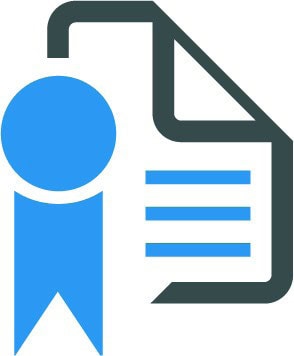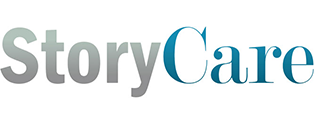176
Instructor’s Guide – Word of Mouth
Overview:
This story is about including patients’ families as members of the healthcare team. Evidence suggests that when they are contributing to the care of their loved ones, risk for VAP will be reduced and VAP rates will decrease. Plus, they will be more satisfied with their care.

Primary Learning Outcomes
After completing this lesson, the student will be able to:
- Explain how the patient’s family and caregivers need to be involved in discussions about the care of their loved ones.
- Generate strategies for including the patient’s family and caregivers in briefings and trainings about how to care for their loved ones.
- Describe and adopt strategies that, wherever possible, allow family members to be involved in providing care for their loved ones.

QSEN Pre-Licensure Competencies
The following QSEN competencies are addressed in this lesson:
- Patient-Centered Care: Recognize the patient or designee as the source of control and full partner in providing compassionate and coordinated care based on respect for patient’s preferences, values, and needs.\
Reflection Questions:
Students will answer reflection questions upon completing the story. These questions are aligned with the QSEN competencies and are designed to help the student reflect on both the content of the story and the QSEN competencies addressed by the story.
*Following each question are some potential answers
- What does this story illustrate about the importance of involving the patient’s family and caregivers in discussions and care of their loved ones?
A: A patient centered approach, should always involve the patient and family
- How did Jimmy’s explanation of VAP
A: Jimmy gave the explanation of ventilator acquired pneumonia without fully understanding that Gladys was not understanding. A patient (mother) centric approach would have provided a detailed explanation and a step by step approach to allow the Gladys to feel a part of the care team.
- How did Penelope’s reaction to Gladys’ mistake create a positive patient care experience instead of a negative one?
A: She was not only a patient advocate, elevating Glady’s ability to provide excellent oral care, but a therapeutic educator.A: Penelope’s non verbal communication was highly effective in not inducing fear or frustration in Gladys, but encouraging a learning and therapeutic interaction.
Discussion Questions:
Use discussion questions for face to face or online discussion boards to get students to further reflect on the content of the story together.
*Following each question are some potential answers
- What can we learn from this story?
A: Engaging the patient and/or family at each phase of care is the focus of a patient centered approachA: Explaining technical terminology is important, but demonstrating and re-demonstrating is an important aspect of evaluating learning for family members wanting to help with nursing tasksA: Being actively present is important for patients and family members and can be incorporated into the task oriented interventions
- What can you do to ensure that you educate family members about how to safely undertake patient care tasks?
A: To provide patient centered care, the patient’s family should be included in as their ability and desire directsA: Being present to hear family members concerns, questions, beliefs and perceptions help to guide a patient centered plan of careA: Return demonstration and verbalization of understanding not only of the steps but the rationale for various nursing interventions is important when incorporating non-clinicians into the care of patients.
Suggested Classroom Mastery Activities:
These activities can be tailored for individuals or groups in a face to face or online setting.
- Create a presentation for families on the importance of their involvement in discussions about their care of their loved ones.
- Develop a checklist for healthcare providers to remind them to include patients and families in briefings and engage them in regular patient care activities.
- Design a poster or graphic to help caregivers remember to include family members in patient care, and include some of the positive outcomes of this practice.

Measuring Student Mastery:
| Learning Outcome | Level 1 | Level 2 | Level 3 |
| Explain how the patient’s family and caregivers need to be involved in discussions about the care of their loved ones. | Student struggles to explain how the patient’s family and caregivers need to be involved in discussions about the care of their loved ones. | Student can explain how the patient’s family and caregivers need to be involved in discussions about the care of their loved ones, but needs further practice. | Student can accurately explain how the patient’s family and caregivers need to be involved in discussions about the care of their loved ones. |
| Generate strategies for including the patient’s family and caregivers in briefings and trainings about how to care for their loved ones. | Student struggles to generate strategies for including the patient’s family and caregivers in briefings and trainings about how to care for their loved ones. | Student can generate strategies for including the patient’s family and caregivers in briefings and trainings about how to care for their loved ones, but needs further practice. | Student can accurately generate strategies for including the patient’s family and caregivers in briefings and trainings about how to care for their loved ones. |
| Describe and adopt strategies that, wherever possible, allow family members to be involved in providing care for their loved ones. | Student struggles to describe and adopt strategies that, wherever possible, allow family members to be involved in providing care for their loved ones. | Student can describe and adopt strategies that, wherever possible, allow family members to be involved in providing care for their loved ones, but needs further practice. | Student can accurately describe and adopt strategies that, wherever possible, allow family members to be involved in providing care for their loved ones. |

Additional Story-Specific Resources:
For additional information on improving team communication, please consult the following articles and resources in Further Reading:
- Professional Behavior Resources
- Improving Teamwork and Communication with TeamSTEPPS
- Berwick on Patient Centeredness
- Achieving an Exceptional Patient and Family Experience of Inpatient Hospital Care
- TeamSTEPPS Essentials
- HTT Patient Experience White Paper
- The Human Factor: The critical importance of effective teamwork and communication in providing safe care.
- Health Coaching for Patients

Story-Specific Best Practices and Proven Tools:
In addition to the ideas generated by students and mentioned in the activities, there are established best practices that may be appropriate to introduce or reference during this lesson to support communication. Some best practices to consider for improving team communication include:
- Advocacy and Assertion
- Briefs
- Collaboration
- Cross Monitoring
- 3Ws – Who I am, What I am Doing, and Why I Care
- Feedback
- Huddles
- Task Assistance
- AskMe3

